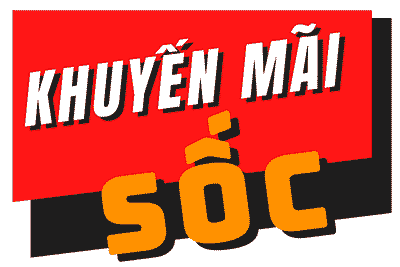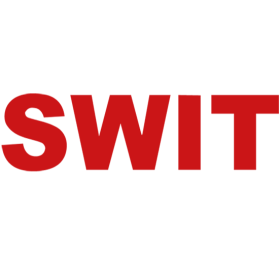The historical cost using the first-in, first-out cost flow might have resulted in $100 per unit appearing phantom profit as the cost of goods sold on the recent income statement. Profits interests, or PIUs, are a form of equity compensation specific to LLCs. Unlike phantom stock, PIUs grant actual ownership in the company’s future profits and any appreciation in value upon a sale or IPO. However, PIUs usually have restrictions on voting rights and management involvement. We hypothesize that NYSE demutualization — converting from nonprofit to for-profit — altered the incentives of the NYSE and undermined this synthetic inertia and thus informational efficiency.
Products
Whether granted up front or over a period of years, the phantom stock phantom profit formula units may either be immediately vested or subject to any vesting schedule determined by the company. For example, vesting may be cliff or graded, time-based, or based on the achievement of specified financial performance goals. Phantom stock is essentially a simulation of stock distribution that protects equity from further dilution but allows employees to gain from company share growth financially. Your choice can result in drastic variations in the cost of goods sold, web income and ending inventory.
BAR CPA Practice Questions: The Effect of Supply, Demand, and Elasticity on a Product
For employees, the company calls all the shots in a phantom equity deal, giving them little control or maneuverability if the share price goes south. They also may be terminated before the deal triggers, over issues outside the employee’s control, leaving them out of luck on collecting any phantom stock cash benefits. Under a typical phantom stock charter or contract, companies can dictate the structure of the agreement.
Phantom Profits
This type of phantom income can be offset by purchasing tax-free zero-coupon bonds or tax-advantaged municipal zero-coupon bonds, in addition to zero-coupon bonds. A phantom profit is a tax advantage that results in no real economic benefit to the taxpayer. Managers need to be aware of phantom profits, especially when there is a substantial difference between the old cost layers and replacement costs. Once the old cost layers have been eliminated, managers may find that their reported profit levels suddenly decline. A profits interest is a type of equity compensation but differs from traditional equity ownership. It grants employees a right to a share of future profits and any increase in company value but typically does not include voting rights or ownership of existing company assets.
How Phantom Profits Hurt Businesses #
The additional profit from this difference in depreciation is considered to be illusory profit. The historical cost using the first-in, first-out (FIFO) cost flow might have resulted in $100 per unit appearing as the cost of goods sold on the recent income statement. Had the replacement cost of the product been used, the cost of goods sold might have been $145. Assuming the product was sold for $165, the financial statements will report a gross profit of $65 ($165 minus $100). If replacement cost would have been allowed and used, the gross profit would be $20 (selling price of $165 minus the replacement cost of $145). The amount of phantom or illusory profit was $45 ($65 reported minus $20 measured using replacement cost).
If payments are to be made in installments, the phantom stock unit plan or grant agreement should also specify whether interest will accrue on the unpaid installments. Phantom income is typically an investment gain that has not yet been realized through a cash sale or a distribution. Phantom income is also sometimes referred to as «phantom revenue.» While phantom income is not necessarily a common occurrence, it can complicate the process of tax planning when it does occur. Employees who hold phantom equity do have a claim on the economic value and growth of the company. Phantom stock plans can be both a good employee motivation tool for employers and a solid cash incentive plan for employees. While it can be a source of revenue, it does not necessarily reflect an increase in the company’s value.
Related AccountingTools Courses
- Appreciation on any asset, e.g. stock, is considered phantom profit unless or until the asset is sold, thereby generating cash flow.
- However, the utility is using up the economic capacity of that plant and the economic capacity might have a replacement cost that is three times as much as the plant’s original cost.
- For example, companies must strictly adhere to the Internal Revenue Service’s phantom profit Tax rule 409A statute.
- If you run a small business, especially in India, knowing about phantom profits is crucial.
This is not to suggest that the ravages of inflation on the economy can be cured by any mere change in accounting techniques. But it does suggest that inflation has incapacitated the business compass of profit-and-loss accounting. Thus far, most of the discussion within the accounting profession has centered on how to change accounting practices to accommodate increasing price levels.
Other Factors In Applying The Lower Of Cost Or Market Rule
Barter transactions are often used as a way to offset costs without actually exchanging cash. For example, a company may trade its products or services for goods or services from another company. While this can be a useful way to reduce costs, it does not necessarily result in an increase in the company’s value. The one exception is when the newest cost layers are used up and earlier cost layers are accessed, in which case phantom profits are more likely. Since zero-coupon bonds pay no interest until they mature, their prices tend to fluctuate more than normal bonds in the secondary market. And even though zero-coupon bonds make no payments until maturity, their holders may be liable for local, state, and federal taxes on to the amount of their imputed interest.
Taxpayers have the option of filling out IRS Form 982 in order to reduce taxes on their forgiven debt. For example, if a partnership reports $100,000 in income for a fiscal year–and a partner has a 10% share in the partnership–that individual’s tax burden will be based on the $10,000 in profit reported. Even if that sum is not paid to the partner because, for example, is it is rolled over into retained earnings or reinvested in the business, the partner may still owe tax on the full $10,000. The firm uses the FIFO cost layering system, and the oldest cost layer for the green widget states that the widget costs $10.
Phantom profits are earnings generated when there is a difference between historical costs and replacement costs. The issue most commonly arises when the first in, first out cost layering system is used, so that the cost of the oldest inventory is charged to expense when a product is sold. If there is a difference between this historical cost and the current cost at which it can be replaced, then the difference is said to be a phantom profit. In times of rising prices, inventory profits are said to occur under the FIFO cost flow assumption. This occurs because under FIFO, the release of (older/newer), (higher/lower) costs to the income statement results in (higher/lower) profits than if current costs were to be recognized. Phantom stock plans can be a valuable method for companies that seek to tie incentive compensation to increases or decreases in company value without awarding actual shares of company stock.
This chapter surveys the relevant theory and the most prominent empirical studies on performing arts nonprofits. In this case, your proceeds are the fair market value of your cryptocurrency at the time of disposal, minus the cost of any fees related to the disposal. Try CoinLedger — the portfolio tracker trusted by 400,000+ users around the world. While not applicable to our modeling exercise, the interest expense would still be based on the $1 million redemption price, i.e. the face value of debt.
- Phantom profits refer to apparent gains that a company seems to have made but which are not actual or realized profits.
- The phantom profits issue most commonly arises when the first in, first out (FIFO) cost layering system is used, so that the cost of the oldest inventory is charged to expense when a product is sold.
- Profits interests, or PIUs, are a form of equity compensation specific to LLCs.
- Phantom stock plans are deferred compensation plans and, as such, must be designed and documented to conform to the requirements of section 409A.
- Phantom equity is essentially a deferred compensation agreement between the company and the employee.
- In times of rising prices, inventory profits are said to occur under the FIFO cost flow assumption.
For example, a company may recognize revenue as soon as a contract is signed, even if the work has not yet been performed. In order to calculate phantom profit, you need to first understand what it is. Phantom profit is essentially when a company appears to be making a profit, but in reality, they’re not. This can happen for a variety of reasons, but typically, it happens when a company overestimates their revenue or underestimates their expenses. The appraiser provides an opinion as to the valuation of the enterprise, which is then used to determine the worth of the phantom units. The dominant theory of financial markets, the efficient market hypothesis (EMH), states that in an efficient market the price of a financial asset reflects publicly available information about that asset.














